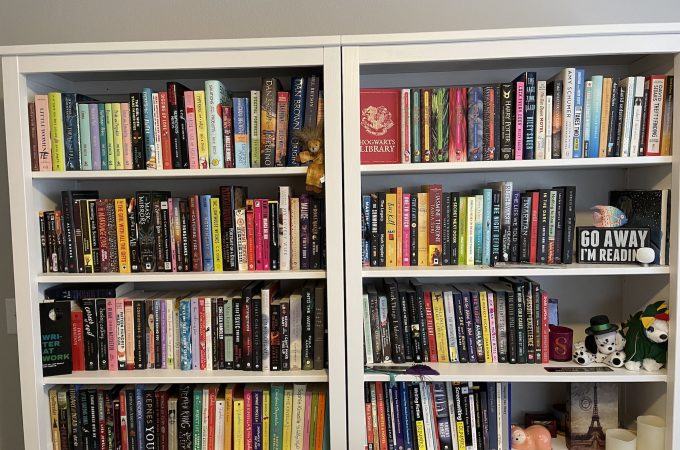
How to write your novel
Have a great idea for a fiction novel? Welcome to the writing community!
Not sure how to start writing your novel? No problem. In this post, I’m outlining the ten major steps to writing a novel. From outlining the major plot points to scheduling your writing sessions, these are the steps you’ll have to take if you want to finish your book and (hopefully) get it published
Ready to start writing your story? Let’s go!
10 steps to writing your story

1. Know the what, why, and who
The first step of writing your book involves answering these three W’s:
- What is about?
- Why should anyone read it?
- Who will read it?
Obviously you have to know what your story is about or it won’t go anywhere, but you also want to make sure there’s enough power behind your story that others will be compelled to go on the journey with you.
You should be able to summarize your story (the what) in a single sentence, or think of it like the elevator pitch. Maybe the what of your story is a classic coming-of-age tale, or learning how to deal with loss, or it’s a Game of Thrones-esque book about a warrior who fights for their birthright as royalty.
Beyond the premise of your book, you need to know why it’s important that you tell this particular story. Does it have a universal theme or life lesson you want to share? Will it move people? Entertain them? There are no wrong answers but you need to be able to explain why it matters that this book is written and shared with the world.
The who doesn’t have to be a descriptive buyer persona, it can be as easy as saying that it’s designed for a YA audience. Mostly you want to make sure there are readers out there who want your book and need your book to be published.
2. Outlining
There are three types of novel writers out there: Plotters, pantsers, and plotsers.
Plotters, as the name suggests, like to plot out their books and create an in-depth outline before they start writing. Pantsers might know a few key details but prefer to let the creativity flow and see where the story takes them. Plotsers are a mix, maybe they know every major plot point and story beat but aren’t sure how they’ll connect.
There are pros and cons to each method. Like, plotters have a great blueprint as they write and know where each scene needs to go, but many writers feel contained by their plot outline. While pantsters can get incredible scenes written out by letting the story run itself, that means they’ll be spending more time in editing as they clean up scenes and make sure everything flows smoothly and plot points connect.
When it comes to outlining, you have to do what works best for you and sometimes that means bypassing the outlining phase all together.
If you want a very basic outline, try the 7-point plot structure:
- The Hook: Grabs the reader’s interest and makes them want to know more about the protagonist, their world, and why the protagonist needs to go on this journey. AKA the Inciting Incident
- Plot Point 1: Result of the inciting incident and leads the protagonist on their journey
- Pinch Point 1: The antagonist applies pressure to the protagonist
- Midpoint: Protagonist stops being reactive and starts being active
- Pinch Point 2: The protagonist fails
- Plot Point 2: Everything is coming together and the protagonist knows what they have to do to reach their goal
- The Resolution: The end of the protagonist’s journey
Want a little more structure? Try the 15-beat Save the Cat method:
- Opening image: Give the reader a quick idea of the main character or protagonist and why they or their world needs to change
- Theme stated: Have another character allude to what the protagonist needs to learn to reach their goal
- Setup: Dive deep into the protagonist’s world and show us the setting, the protagonist’s flaws, and current status quo. Show how the protagonist wants something but is going about achieving it in the wrong way
- Catalyst: Set the story in motion and bring the protagonist into it
- Debate/Prepare: If the character is following the traditional hero’s journey, they may reject what happened in the catalyst and try to back out of going on this journey. Or, they know they have to and now they just have to prepare
- Break into 2: The protagonist accepts their journey
- B story: Introduce new characters to help the protagonist on their journey
- Fun and games: Show how the protagonist is either winning or failing in their new world
- Midpoint: The hero has a false win or a false loss
- Bad guys close in: Either literal bad guys or the protagonist’s flaws up the stakes and add pressure on the protagonist
- All is lost: The protagonist hits rock bottom
- Dark night of the soul: The protagonist reacts to everything that happens
- Break into 3: The protagonist realizes what they need to do to win and is ready to take action
- Finale: The protagonist understands the theme and has learned what they needed to to finally reach their goal
- Final image: Show how the protagonist has been transformed and become a different person from where they started
3. Research
If your characters are in a world, setting, job, or situation you’re not intimately familiar with – it’s time to get familiar! Do your homework and make sure you’re creating the story in a plausible manner.
Setting your story in New York in the fall? Study up what the temperature is like, what it looks and feels like, and so on so you’re not rambling about the 100-degree days when it’s more like 60. Readers tend to operate on the suspension of disbelief but don’t push it too far or have them give up on your book over a tiny, inaccurate detail that could have been fixed with some research.
4. Time to write
Now it’s time to start writing your novel! Yay! Before you start typing away, make sure you’ve found the right writing software.
Google Docs or Word Docs are just fine, but remember that it’ll take some formatting work when it’s time to send it off for review or publishing.
If you’re serious about writing, you might want to use well-known writing software, like:
- Scrivener
- Reedsy
- Dabble
Scrivener is the go-to for many writers as it’s such a robust system. You can store notes, images, scene lists, research, and pretty much whatever you want so it’s handy when it’s time to write. I was honestly overwhelmed with it and moved to Reedsy as I just need the writing space and manuscript formatting.
Dabble is another good option and has a good index card scene list builder, but isn’t as feature-rich as Scrivener yet.
5. Scheduling writing time
You’ve got your story idea, your outline, your writing software open and ready and now you stare at your computer wondering how to start. Congratulations, you’re a writer!
All jokes aside, the hardest part about writing isn’t coming up with ideas or characters, it’s going to be the actual writing part and not getting distracted.
You will most likely have to schedule in uninterrupted writing time, even if it’s only 20 minutes at the beginning.
We all operate on our own internal clock and schedule and your creativity peaks at different times. To narrow down when you should be writing, ask yourself:
- When do I have the most free time? As in, when do you find yourself being asked by Netflix if you’re still watching?
- When can I fit a writing session into my normal routine? Maybe you find you have a little bit of time every day before bed or you might have three hours free on Sundays. Writing can be like a New Year’s resolution to exercise more. You’re motivated at first but then you just burn yourself out. Find a way to make writing a fun and enjoyable part of your routine.
- What time of the day am I most alert and productive? Some of us are ready to go as soon as our eyes open and some of us are our most creative at two in the morning. I’m a night owl so my best writing happens after 10 p.m. but that doesn’t mean you should be staying up late if that doesn’t feel right for you.
- Is this writing session schedule feasible? Writing during NaNoWriMo means you’re writing every day but it’s only a month and many writers can stick to it… but does that mean you can dedicate time to writing every single day for 365 days in a row? Make sure your writing schedule will actually work with your normal one.
When adding your writing sessions into your routine, be sure to account for where you’ll be writing. If you have a home office, preferably with a door, that’s a great option so you can go distraction-free for longer periods of time. But if you want to write on the couch and then your significant other moseys on over and turns on the TV, bye-bye productivity!
Create a space that’s dedicated to writing and can hopefully be free of distractions. On that note, do yourself a favor and get rid of your own distractions. Leave your phone in another room, close out of all other tabs or software besides where you’re writing, stop checking social media, and tell your family or roommates that they should only speak to you if the world is ending.
6. Set goals
Like any major goal in life, writing a book is best broken down into smaller parts that can be quickly achieved. Because let’s be honest, writing 1,000 words in a writing session is much easier to handle than the idea of “write a 120,000-word novel.”
Most writers set word count goals to keep tabs on their progress. You can create daily, weekly, or monthly word count goals based on your writing schedule or how quickly you want to tackle this project. Weekly goals can be more flexible as it gives you days that you can slack a bit and days that you need to be in the zone.
You’ll want to track your progress, in a spreadsheet, in a note, or using your chosen writing software.
7. Say hello to writer’s block
A writer’s worst enemy: Writer’s block. It’s inevitable. Whether it hits you when you sit down in front of your computer and absolutely no words come to mind or whether it happens as you’re furiously typing and then your mind hits a wall, it’s going to happen.
We’ve all been there.
There are many reasons we get writer’s block: Insecurity about your writing, no motivation to write, realizing there’s a giant plot hole in your climax, or getting stuck on a scene you’re not excited about but know it’s important.
Don’t worry, there are ways to overcome this challenge of writing! Read my five tips for overcoming writer’s block so you can get back on track.
One of the best things to keep in mind with writer’s block is that you can always edit a bad page, but you can’t edit a blank one (thanks, Jodi Picoult!). Try to push through and get something down on paper, so to speak.
8. Get feedback
I know this is coming hot off the heels of writer’s block and is one of the reasons we get writer’s block, but asking for feedback is a crucial part of writing a book.
If you’re not ready for professional feedback and editing, start by giving your manuscript to trusted friends and family. They may not be able to provide constructive criticism the same way a paid editor would, but they can tell you what’s working, what’s not, what they like, and what they don’t understand. This outside view can help you know if you’re writing clearly, if your theme is coming through, and if your characters are likeable and believable.
Then it’s back to you. You actually have to listen to the feedback and hear what people are telling you. Will it be hard? Yes. Will it help? Yes.
Remember that people are just trying to help and make your story as amazing as it is in your head. Try not to take it personally even though our stories are very personal to us as we live in them, we know these characters, and we know the plot points like the back of our hands. Separate yourself from your story and your characters and take the feedback with grace and gratitude.
Once it’s ready for real editing, it’s time to find the right kind of editing for your story. Most editing falls into these categories:
- Developmental editing: A developmental edit looks at your story in a big picture mindset to edit the structure, pacing, plot, characterization, timeline, and marketability. This is often the first step of the editing process to make sure your story works before diving into the nitty gritty editing portion.
- Copy editing: The editor reads every single word to check the grammar, spelling, language, POV consistency, and correct dialogue tags of the manuscript. This person is going to tell you if you actually know how to use commas and semicolons correctly and point out any typos.
- Line editing: This editing looks at the language, tone, style, and sentence structure to help you create better prose.
- Proofreading: The last line on the editing trail! Proofreaders are like copy editors on crack who use their eagle eyes to catch any error so that it doesn’t make it to the printed copy. They check spelling, grammar, and style as well as layout, typography, or weird word or page breaks. Their job is to make sure this not only looks good on paper, but also reads well.
9. Find it a home
Many writers are bypassing traditional publishing houses and going straight for self-publishing. Both are great options and you should research which way you want to publish. Self-publishing does come with less heartache and rejection, but that also means the marketing of it is all up to you. Traditional publishing comes with more power behind your book, but a longer timeline and less authorial control.
Take the time to do your homework and find out what route of publishing will work best for your book and you as an author.
10. Promote it
If you’ve gotten this far, I sure hope you’ve taken the time to create and build up your author presence online so you can promote and market your published work! Spread the news online about what your book is about, why they should read it, and who should read it – see, I’m bringing it full circle!
Have any other writing tips you want to share? Put them in the comments below or give me a shout on Twitter!




